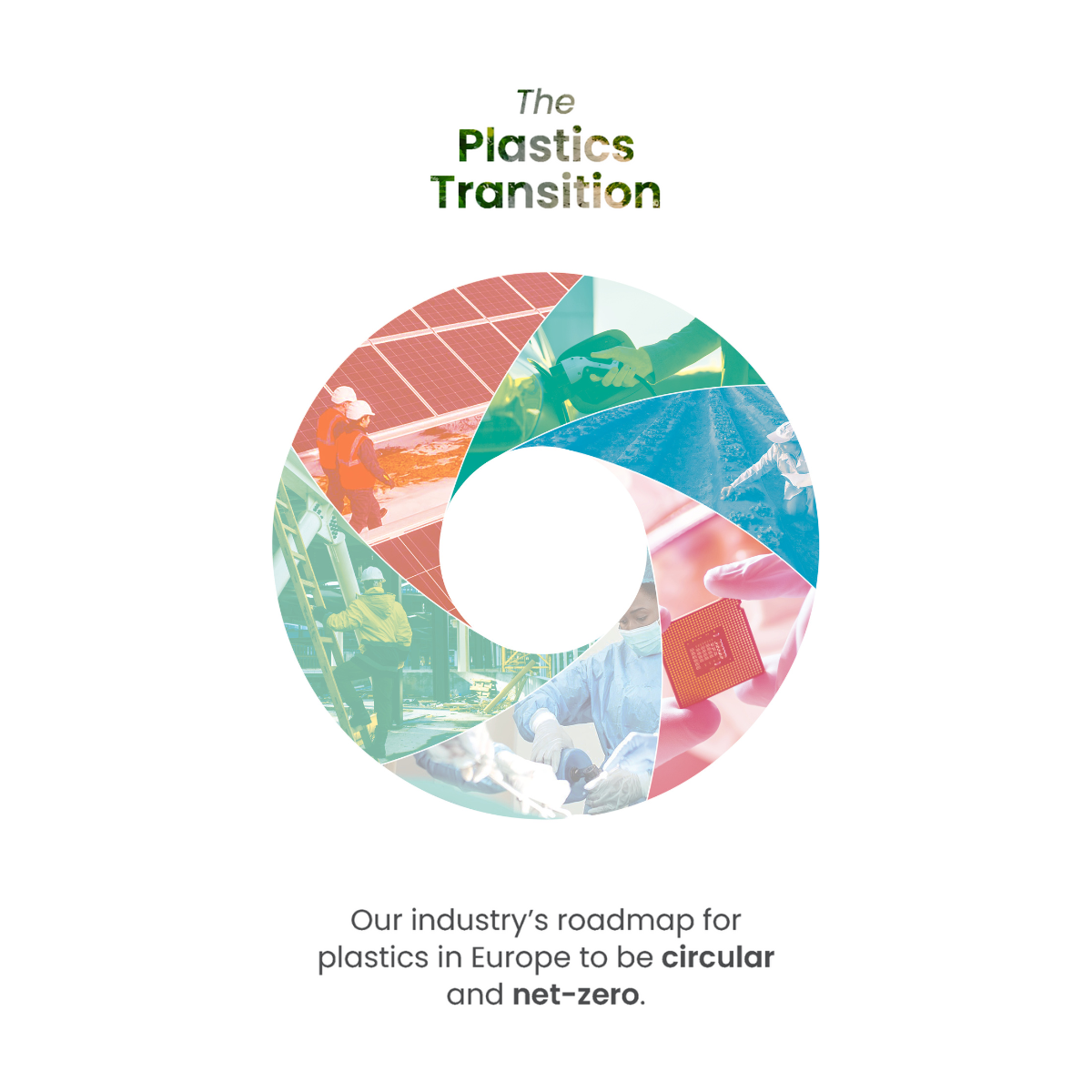Plastics Europe launches ‘radical’ €235bn roadmap for industry sustainability

PLASTICS EUROPE has revealed a “radical plan” to completely redesign the European plastics sector, aimed at delivering increased circularity and net zero by 2050.
Projecting an additional industry cost of €235bn (US$249bn), president of Plastics Europe, Marco ten Bruggencate, said the trade body’s new roadmap, The Plastics Transition, is an invitation to policymakers and value chain members to collaborate and progress quicker.
The road to a transition
The action-based, data-driven roadmap establishes a pathway to reduce greenhouse gas emissions from the plastics system by 28% by 2030, and towards net zero by 2050. It is centred on three pillars: circularity, net zero, and fostering sustainability.
Virginia Janssens, managing director of Plastics Europe, said: “We have reached a decisive moment for the European plastics system. The next two to four years will determine [what] the plastics industry will look like in 2050, so the window of opportunity is rapidly closing. It’s really critical that we get on with this roadmap and programme and accelerate where we possibly can.”
During a briefing, speakers from Plastics Europe and report development partner Deloitte focused on circularity and net zero. The roadmap targets 65% plastics circularity in Europe by 2050, reducing reliance on fossil-fuels from around 90% in 2021 to 35% by 2050. Increased plastics reuse is also set to play a part in this more circular future.
There is “no silver bullet” solution for achieving circularity, Bruggencate commented, and the roadmap envisions several technologies contributing to increased circularity, including chemical recycling. He noted this has an important role to play in helping to achieve circularity in contact sensitive applications, such as packaging or in the medical sector.
While this technology is still under development, it is “the big thing of the coming decade,” said Maarten Dubois, director of sustainability and circular economy at Deloitte. He said that “a lot of investment is occurring in the space and a lot of breakthroughs are expected”. Several members of Plastics Europe have announced €8bn of investment by 2030 for pilot plants and scaleup, says the report. It projects the area will start to pick up over the coming decade, increasing to around 12m t/y by 2050. This contributes about 30% of the total circularity in 2050.
Meanwhile, established mechanical recycling will continue to play a part, growing from 5.3m t/y in 2021 to about 15m t/y by 2050. Increasing biomass-based production and promising production based on carbon capture and use, and low carbon hydrogen, will also contribute to circularity by 2050 (around 11m t/y and 3m t/y, respectively).
According to the roadmap, the shift to circular feedstock would reduce CO2e emissions by 89m t/y (or 38%) by 2050, compared to the baseline scenario. Emissions savings would also come from reuse (36m t/y) and avoiding waste incineration (40m t/y). Fully realising the net zero aspiration for Europe’s plastic sector would additionally require reduction through efforts such as energy efficiency, fuel switching, electrification, and carbon capture and storage (CCS).
In all, achieving the transition outlined in The Plastics Transition would see industry incur a total cumulative cost of €3,527bn by 2050, equivalent to €235bn more than the business-as-usual scenario.
To help unlock the scale of investment required, Janssens said the trade body is calling for harmonised and enforceable EU regulatory framework. She added that industry needs to work more closely with policymakers as well as the value chain to address the challenge.
The roadmap also makes specific recommendation to industry, policymakers, and value chain members for the period to 2030, towards achieving the 2050 vision.
A call for immediate action
To help industry make the changes needed, the report recommends immediate actions to take over 2023–2025. These include partnering with waste management companies to secure the circular feedstock needed to drive circularity, as well as investing in new technologies and collaborating to speed up technology development.
In the short term (2026–2027) it recommends a shift towards circular practices such as recycling, biomass-based production, and carbon capture, as well as investing in joint infrastructure for hydrogen, renewable energy, and CCS. Actions it advises for the medium-term (2028–2030) include having chemical recycling operational at scale by investing in capacity and partnering with technology providers.
To make circular plastics production in Europe more competitive, the roadmap recommends that the EU develops an equivalent to the US Inflation Reduction Act (IRA). Legislated in 2022, IRA supports climate and low-carbon programmes with more than US$370bn. The Act has raised concerns for other nations of cleantech redirecting investment to the US and supply chain disruptions. Earlier this year, the EU outlined plans for scaling up clean technologies seeking to improve its competitiveness.
Another immediate action for government to aid circularity is legally recognising a mass balance fuel-exempt approach for chemical recycling, a method for determining recycled content. Earlier this month, Plastics Europe was among 20 associations in the plastics supply chain that urged EU member states to adopt the approach.
Shooting for the moon

Bruggencate said: “We’re under no illusion about the scale and the complexity of this generational task – it’s immense. And we’ve already gone through a profound cultural shift as an industry, but the political, technological, commercial revolution which needs to take place to achieve this will really make this initiative our industry’s moonshot.”
He said for the first time, Plastics Europe members are united under a common vision and ambition for net zero and circularity and are committed to delivering on the actions outlined in the report. But “ultimately we need to get the support…of more than 50,000 companies, 1.5m people in this chain…who make up the European plastic system”.
Bruggencate said The Plastics Transition importantly demonstrates to all stakeholders that a transformation is possible by setting very ambitious targets towards circularity and zero emissions, going on to highlight it as an opportunity to safeguard European competitiveness, the economy, and jobs.
“This roadmap should be understood as an invitation to policymakers, value chain members to challenge our thinking and identify areas where we can strengthen, join forces, and process quicker,” he said.
The Plastics Transition is a response to the European Green Deal, a package of policy initiatives aimed at setting the EU on the path to a green transition, with the goal of achieving climate neutrality by 2050. It represents a milestone for Plastics Europe, outlining the next step in its journey, following the 2022 report ReShaping Plastics: Pathways to a Circular, Climate Neutral Plastics System in Europe. Commissioned by Plastics Europe and developed by Systemiq, the previous report aimed to evaluate progress and assess the potential of different levers to help achieve EU net zero and circularity by 2050.
Recent Editions
Catch up on the latest news, views and jobs from The Chemical Engineer. Below are the four latest issues. View a wider selection of the archive from within the Magazine section of this site.




